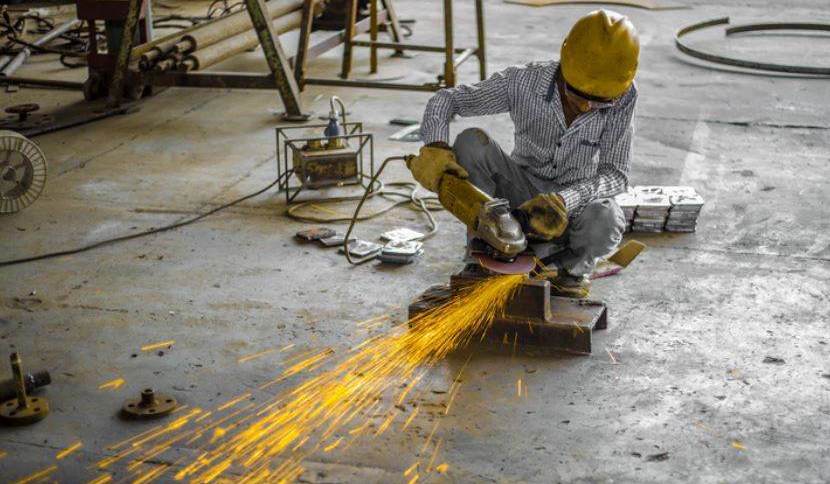RIO DE JANEIRO, BRAZIL – In the last 15 years, Brazilian industry went from the 9th position, among the largest in the world, to the 14th. In the same period, the country’s participation in global manufacturing fell almost by half: from 2.2% to 1.3%, according to the Institute for Industrial Development Studies (Iedi).
Among other problems, two strong and sequential crises – the one of 2015/2016 (during President Dilma Rousseff’s government) and the one of 2020 (during the pandemic) – took away jobs, initiatives, innovation, and investments, which were so small that they were unable to replace the depreciation of the factories. With less strength, their economic value shrank by 1.5% year on year between 2005 and 2020.

A considerable part of the emerging countries went in the opposite direction, as shown in the extensive Iedi study. Now, the post-pandemic situation is likely to worsen, with developed nations working to bring industry back to their territories.
“In a few months, the pandemic created pandemonium throughout the global production, logistics, and trade chain,” says Glauco Arbix, coordinator of the humanities area at USP’s Center for Artificial Intelligence. “The big economies have realized the importance of having factories close to the consumer, to depend less on globalized logistics.”
The response of the great powers, says Rafael Cagnin, an economist at Iedi, was quick. The structuring of Biden’s plans, in the US the European Union recovery plan and China’s five-year growth plan, with practical, detailed actions – and a considerable volume of money – reinforced the economic dynamism of the Northern hemisphere, which tends to gain muscle and take a new leap.
“Geographically far from this dynamic economic axis, all the rest of the world is a supporting player, including Brazil and Latin America,” says Cagnin. “In this new reality, being a potential market is not enough: it is necessary to concretize and make the promise a reality.”
The closing of multinational factories in the country in the middle of the pandemic is one of the signs of this change of axis and this kind of “fatigue” – and the repositioning of global chains. A few examples: Ford, Mercedes-Benz, LG, and Sony, all closed down assembly lines in Brazil.
“The pandemic has only reinforced a movement of the last ten years, of recalibration of the technological process, which is the essence of Industry 4.0, with the modernization of all economic activities,” says Cagnin.
With the structural change, say the specialists, Brazilian manufacturing’s status is going from small to irrelevant. By becoming even more susceptible to the instabilities of commodities, the country tends to maintain weak growth and create poorly paid jobs. “No less honorable, low-skill jobs have salaries commensurate with what they produce,” says Arbix. “This situation condemns Brazil to be a middle-income country – and to deep inequality.”
Although some local manufacturers try to keep up with Industry 4.0, not everything depends on private initiative. As on several other fronts, there is a lack of state policies that provide conditions for executing strategies. “What’s the point of putting sensors, robots, and artificial intelligence into production if the internet or power goes down when it rains?” says Cagnin. “How is it possible to move toward sustainability if you have to run an oil-powered generator with the threat of a power outage?”
In practice, besides the lack of infrastructure, the government’s plan focused on innovation, productivity, competitiveness, and international integration has also had little effectiveness. “The Industry 4.0 Chamber, for example, has had no effective impact actions,” says Cagnin. “The ‘Brasil Mais’ program, to improve the productivity of micro, small and medium-sized companies, is timid and does not take off.”
The business environment and the reduction of the Brazil Cost are still blocked. There is also no clear and orderly strategy for international integration. “These programs always have a lot of marketing, but they could offer some help,” says Arbix. “But with the government in a situation of paralysis and worried about reelection, the public apparatus is demobilized, and the business sector, which grew under the wings of the state but had many obstacles, suffers.”
If it stops helping, on the one hand, the government harms even in one of the areas in which the national productive sector has modernized: private financing. With the change in the direction of the National Bank for Economic and Social Development (BNDES) resources, which reduced loans to large groups, companies had to learn to raise funds in the market.
“It was a learning process, possible when interest rates came in place and BNDES left: many companies started to understand the debt market, who the agents are, the procedures and the economic and financial criteria to be considered,” says Cagnin. “It’s not something that happens overnight, especially when the pandemic throws sand in the process.”
After six years of an adverse environment when companies began to move forward, volatility caused by political noise and increased fiscal risk threatened this path. One investment banker, who asked not to be identified, sees the coming year with companies making fewer equity offerings and issuing more debt securities but no growth in demand for funds because of a near-zero GDP growth. In addition, with the Selic and higher risks, money becomes more expensive.
“It’s a short-breath trajectory because the financial sector, to invest and release credit, needs a guarantee of return and predictability – nothing that is on the radar,” says Arbix. “Brazil has exceptions, but its companies have little muscle and can’t break this perverse cycle by themselves for the recovery of confidence.”

